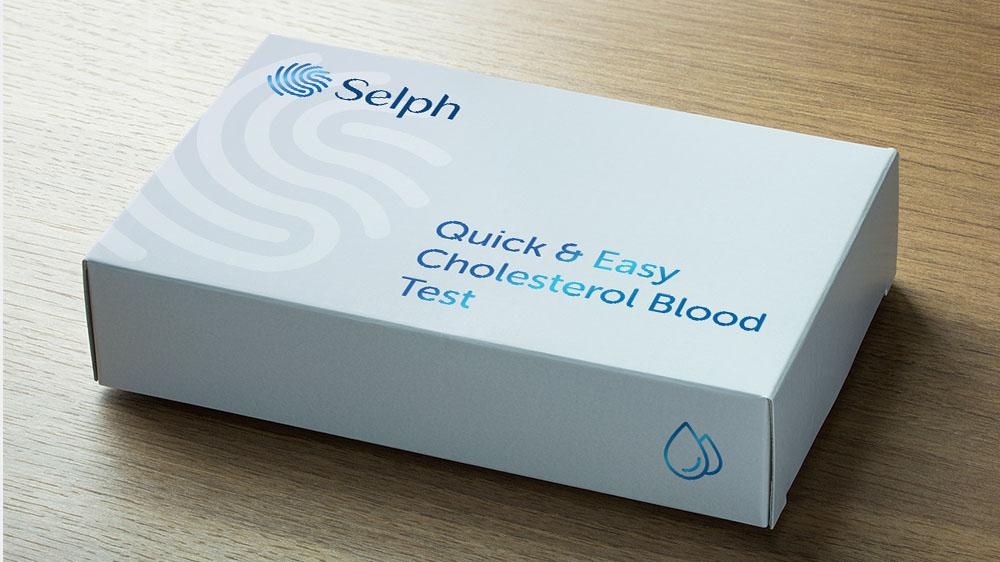What do my lipid and cholesterol blood test results mean?
Medical review by
Dr Alasdair Scott MBBS FRCS PhDPublished
Key Article Takeaways
- High cholesterol increases your risk of heart disease, stroke and dementia.
- When it comes to cholesterol, “normal” is not the same as “optimal” if you want to live better for longer.
- Tracking your cholesterol levels over time is the best way to make sure you’re on the right path with your health.
- Test your lipid profile, diabetes risk and more with our Complete Heart Health, Cholesterol and Diabetes Blood Test.
Your “lipid profile” - the levels of cholesterols and triglycerides in your blood - is one of your most important health markers. We’ll cut through the jargon, look at what the numbers actually mean and cover what the data says about “optimal” vs. “normal” levels. We’ll also give some advice on how often you should be checking your lipid and cholesterol levels.
What are lipids, cholesterol and triglycerides?
Lipids are fat molecules which are essential for life. They’re the building blocks for all of your cell membranes as well as numerous other key molecules. The two main types of lipids are triglycerides and cholesterols.
When you think of “fat” in your body, you’re probably thinking of triglycerides. This is the major lipid that’s contained in your fat cells (called adipocytes). Your body uses triglycerides to store energy amongst other things.
Cholesterols are another type of lipid and are key building blocks your body uses to make lots of important molecules like vitamins, bile acids and hormones.
It’s important to understand that triglycerides and cholesterols are essential for your health. You literally can’t live without them but high levels will cause problems. As with most things, balance is the key to optimal health.

Is there good and bad cholesterol?
You might have already heard about two types of cholesterol: HDL and non-HDL. HDL stands for high-density lipoprotein. HDL is often described as “good” cholesterol while non-HDL cholesterol is often thought of as “bad”. This is definitely an oversimplification but we’ll go through what it means.
Why is non-HDL “bad”?
Non-HDL cholesterol is the cholesterol in your blood that's not HDL, so it's your total cholesterol minus your HDL cholesterol. Non-HDL cholesterols include LDL (low-density lipoprotein), VLDL (very-low-density lipoprotein) and IDL (intermediate-density lipoprotein). Most of your non-HDL cholesterol is LDL.
Non-HDL cholesterol is generally thought to be “bad” because it transports and offloads fats into your blood vessels and organs. High non-HDL levels are associated with a higher risk of death and disease.
What’s HDL’s role?
HDL cholesterol is thought to be “good” because it transports fats out of blood vessels and organs. Up to a point, higher HDL levels are associated with a lower risk of heart disease.

Why is my lipid profile so important and why should I test my levels?
We’ve already said that cholesterol and triglycerides are essential for health but that high levels cause fat build-up throughout your body - in your blood vessels, muscles and organs. Fat build-up causes a number of problems including low-grade inflammation that affects nearly every system in your body.
Put simply, the higher your cholesterol levels, the higher your risk of death. Cholesterol is one of the major drivers of heart disease - the number one cause of death in the Western World. You probably knew that already. But what you might not know is that high cholesterol is also linked to a whole host of major health problems including stroke and dementia.
Although we have specific cut-offs where we say that your lipid levels are “normal” or “high”, the reality is that your lipids levels are on a spectrum. Even if your levels are in the “normal” range, lower levels are generally still better for your health. This leads to so-called “optimal” levels, which is where you need to be if you want to have better than “average” health.
Checking your lipid levels and tracking them over time is crucial to make sure that they’re in the optimal range and staying there. If they’re creeping up over time, you can take action to get them down and lower your risk of going on to develop major health problems.
How do I test my cholesterol?
You can test your cholesterol with a lipid profile blood test. This is a simple finger-prick blood test you take at home and then just send your sample off to the lab for analysis. Eating food can temporarily affect your blood lipids, so it’s best to take your blood sample in the morning before you eat, when you’re “fasted”.
Your lipid profile includes a number of biomarkers and we’ll go through each in turn. With many of them we have a level that’s considered “normal” in most people but there’s often a level that studies suggest would be “optimal” if you want to live better for longer.
Total Cholesterol

Your total cholesterol is the combined concentration of all your cholesterols in your blood. A healthy total cholesterol level is less than 5mmol/L. But total cholesterol is a combination of “good” HDL and “bad” non-HDL cholesterol, so on its own, it doesn’t tell the whole story. You need to know the HDL and non-HDL levels.
HDL Cholesterol

HDL cholesterol is beneficial for your health so you want to have high levels. However, if the level is too high, this beneficial effect is probably lost and might even be harmful1. An HDL level of 1.3 to 1.7mmol/L is optimal.
Non-HDL and LDL Cholesterol

Non-HDL cholesterol is the concentration of cholesterol in your blood that’s not HDL. It’s mostly LDL cholesterol but also includes VLDL and IDL cholesterol.
High levels of non-HDL cholesterols, such as LDL, are associated with an increased risk of heart disease, stroke and dementia amongst other health problems. An optimal non-HDL level is between 1.3 and 2.6mmol/L (you need some non-HDL)2. A non-HDL cholesterol over 3.3mmol/L is too high.

For LDL, the lower the level the better and the optimal is under 1.8mmol/L3.
Total cholesterol to HDL cholesterol ratio (TC:HDL).

Although the absolute levels of your cholesterols are important, another way to look at them is as a ratio comparing your total cholesterol to your HDL cholesterol. So if your total cholesterol is 3 and HDL cholesterol is 1.5 then your TC:HDL ratio is 2. Lots of studies have looked at the association of this ratio with heart disease and have shown that the lower the number the better. Below 6 is considered normal but getting it below 3.5 is ideal4, 5.
Triglycerides

Like non-HDL cholesterol, high triglycerides are associated with an increased risk of heart disease. A level below 1.7mmol/L is considered normal but studies suggest that the lower the better and you really want to be under 1.13mmol/L6.
You can check your cholesterol status and lipid profile (which includes all the above) with our Quick & Easy Cholesterol Blood Test. Take our simple blood test at home and post it to our lab for results and a doctor’s report in days.

How often should I test my cholesterol?
Although high cholesterol levels cause significant health problems, they don’t cause any symptoms on their own. So you won’t know if you have high cholesterol unless you test your lipid profile.
In the UK, you’ll get invited to the NHS Health Check every 5 years after you turn 40. They’ll check your cholesterol along with a few other markers. But 40 is too late. Heart disease takes decades to develop and atherosclerosis starts when you're in your teens. If your lipid profile is not optimal, you need to know about it as soon as possible so you can make the changes you need to get your levels where they should be, before they impact your health. A 5 year gap between testing is also too long - a lot can change with your health in that time.
The National Heart, Lung and Blood Institute in the USA7 recommends checking your cholesterol earlier and more frequently:
- Age 20-45: every 5 years
- Men aged 45-65 and women aged 55-65: every 1-2 years
- Older than 65: every year
If your levels are not optimal when you test or you have other risk factors such as high blood pressure, being overweight, a high blood sugar or a strong family history of heart disease then you should consider testing more frequently.
Tracking your lipid profile over time is the best way to see the direction your health is travelling. If your cholesterol levels are creeping up, little-by-little every time you test, then you know you need to change course. Start monitoring your cholesterol status and lipid profile today with our Complete Heart Health, Cholesterol and Diabetes Blood Test.
For an even fuller picture, our General Health Blood Test checks your cholesterol and HbA1c diabetes risk along with a number of other biomarkers of your key body systems. It’s an ideal test panel to do every 12-18 months to keep your health on track.
Get tips on better health
Sign up to our emails on the better way to better health.
We'll keep you up-to-date with the latest research, expert articles and new ways to get more years of better health.


